
الإنجليزية

يسوع في الترجمات الحديثة للقرآن | يسوع القرآن مقابل يسوع العهد الجديد
في هذا الفيديو، يتناول غابرييل سعيد رينولدز عرض عيسى في القرآن وكيفية تفسيره وترجمته إلى الإنجليزية في الترجمات الحديثة للقرآن. أوضح أن الترجمات الحديثة تؤكد على الاختلاف بين عيسى القرآني وعيسى العهد الجديد، وأن الكتابين المقدسين في الواقع يقدمان عيسى بطريقة مختلفة جدًا. كما يناقش أصل وتاريخ اسم “عيسى” وأكثر من ذلك.
ملخص بواسطة منصة الجامعة للبحث عن الإسلام
يتناول هذا الفيديو تصوير عيسى في القرآن وفي الترجمات الحديثة للنص الإسلامي المقدس. النقاط الرئيسية التي تمت مناقشتها هي:
- يختلف الاسم القرآني لعيسى، “عيسى”، عن اللغات الأخرى التي تستخدم مشتقات من العبرية “يشوع”. تقترح نظرية حديثة أن “عيسى” قد يكون مشتقًا من نقش عربي قديم يستحضر إلهًا يدعى “عين سنيا”.
- يختلف عيسى القرآني اختلافًا كبيرًا عن عيسى الأناجيل. على الرغم من وجود بعض العناصر المشتركة (الولادة العذرية، المعجزات)، إلا أن العديد من الجوانب الحاسمة للأناجيل غائبة عن القرآن (الأمثال، الآلام، إلخ). يقدم القرآن عيسى مميزًا، متكيفًا مع رسالته اللاهوتية الخاصة.
- تمت دراسة ثلاث ترجمات قرآنية حديثة: ترجمات محمد أسد، هلالي-خان، وصحيح إنترناشيونال. تتبنى كل منها نهجًا مختلفًا في ترجمة النص، خاصة فيما يتعلق بعيسى.
- محمد أسد، وهو عقلاني، يحاول تجنب التفسيرات الخارقة للطبيعة. يدمج هلالي-خان عناصر من التقليد الإسلامي (الحديث) في ترجمتهما. تقدم صحيح إنترناشيونال ترجمة أكثر حرفية.
- تؤكد هذه الترجمات على خصوصية عيسى القرآني مقارنة بعيسى الكتاب المقدس. على سبيل المثال، تتجنب تقديمه على أنه “الكلمة” الإلهية، على عكس التفسيرات المسيحية.
- يبدو أن القرآن يربط عيسى بنوع من النضالية، وهو جانب غائب عن الأناجيل ولكنه متسق مع سياق النبي محمد.
في الختام، يؤكد غابرييل سعيد رينولدز أن القرآن يخلق فعليًا “عيسى جديدًا”، متكيفًا مع رسالته النبوية الخاصة، تمامًا كما يعيد تفسير شخصيات توراتية أخرى. تعكس الترجمات الإسلامية الحديثة هذا التمييز اللاهوتي، متجنبة القراءات المسيحية المفرطة للنص القرآني.
Dans cette vidéo, Gabriel Said Reynolds traite de la présentation de Jésus dans le Coran et de la façon dont elle est interprétée et rendue en anglais par les traductions récentes du Coran. Je montre que les traductions récentes mettent l’accent sur la différence entre le Jésus coranique et le Jésus du Nouveau Testament et qu’en fait, les deux Écritures présentent Jésus de manière très différente. Il discute également de l’origine et de l’histoire du nom ‘Isa et bien plus encore.
Résumé par Pluriel
Cette vidéo porte sur la représentation de Jésus dans le Coran et dans des traductions récentes du texte sacré musulman. Les points principaux abordés sont :
- Le nom coranique de Jésus, “Isa”, diffère des autres langues qui utilisent des dérivés de l’hébreu “Yeshua”. Une théorie récente suggère que “Isa” pourrait venir d’une ancienne inscription arabe invoquant une divinité nommée “Ein Sinya”.
- Le Jésus coranique diffère significativement de celui des Évangiles. Bien que certains éléments soient communs (naissance virginale, miracles), de nombreux aspects cruciaux des Évangiles sont absents du Coran (paraboles, Passion, etc.). Le Coran présente un Jésus distinct, adapté à son propre message théologique.
- Trois traductions coraniques récentes sont examinées : celles de Muhammad Asad, Hilali-Khan, et Sahih International. Chacune adopte des approches différentes pour rendre le texte, notamment concernant Jésus.
- Muhammad Asad, rationaliste, tente d’éviter les interprétations surnaturelles. Hilali-Khan intègrent des éléments de la tradition islamique (hadith) dans leur traduction. Sahih International offre une traduction plus littérale.
- Ces traductions soulignent la spécificité du Jésus coranique par rapport au Jésus biblique. Par exemple, elles évitent de le présenter comme “le Verbe” divin, contrairement aux interprétations chrétiennes.
- Le Coran semble associer Jésus à une certaine militance, un aspect absent des Évangiles mais cohérent avec le contexte du prophète Muhammad.
En conclusion, Gabriel Said Reynolds souligne que le Coran crée effectivement un “nouveau Jésus”, adapté à son propre message prophétique, tout comme il réinterprète d’autres figures bibliques. Les traductions musulmanes modernes reflètent cette distinction théologique, évitant les lectures trop christianisantes du texte coranique.
In this video, Gabriel Said Reynolds discusses the presentation of Jesus in the Qur’an and how it is interpreted and rendered in English by recent translations of the Qur’an. I show that recent translations emphasize the difference between the Qur’anic Jesus and the Jesus of the New Testament and that in fact, the two Scriptures present Jesus very differently. He also discusses the origin and history of the name ‘Isa and much more.
Summary by Pluriel
This video focuses on the representation of Jesus in the Qur’an and in recent translations of the Muslim sacred text. The main points discussed are:
- The Qur’anic name for Jesus, “Isa”, differs from other languages that use derivatives of the Hebrew “Yeshua”. A recent theory suggests that “Isa” might come from an ancient Arabic inscription invoking a deity named “Ein Sinya”.
- The Qur’anic Jesus differs significantly from that of the Gospels. Although some elements are common (virgin birth, miracles), many crucial aspects of the Gospels are absent from the Qur’an (parables, Passion, etc.). The Qur’an presents a distinct Jesus, adapted to its own theological message.
- Three recent Qur’anic translations are examined: those of Muhammad Asad, Hilali-Khan, and Sahih International. Each adopts different approaches to rendering the text, especially concerning Jesus.
- Muhammad Asad, a rationalist, tries to avoid supernatural interpretations. Hilali-Khan incorporate elements of Islamic tradition (hadith) into their translation. Sahih International offers a more literal translation.
- These translations emphasize the specificity of the Qur’anic Jesus compared to the biblical Jesus. For example, they avoid presenting him as the divine “Word”, unlike Christian interpretations.
- The Qur’an seems to associate Jesus with a certain militancy, an aspect absent from the Gospels but consistent with the context of the prophet Muhammad.
In conclusion, Gabriel Said Reynolds emphasizes that the Qur’an effectively creates a “new Jesus”, adapted to its own prophetic message, just as it reinterprets other biblical figures. Modern Muslim translations reflect this theological distinction, avoiding overly Christianizing readings of the Qur’anic text.
مصادر الكاتب في الموقع

videos
ندوة عبر الإنترنت: الأصول الإسلامية والتفاعل اللاهوتي المسيحي مع الإسلام
المشاركون ديفيد مارشال، جامعة برن (مُدير الجلسة)، المحرر الضيف لمجلة إسلاموكريستيانا مارتن عقاد، المعهد اللاهوتي المعمداني العربي دانيال براون، معهد دراسة الأديان في الشرق الأوسط دييغو سارّيو ...

videos
الإسلام وخلاص غير المسلمين؛ وجهة النظر القرآنية
في مؤتمر Pluriel حول موضوع "الإسلام والآخر" ، دافع غابرييل سعيد رينولدز عن الفرضية القائلة بأنّ القرآن يصرّ على أنّ الحرية الممنوحة من الله تقدّمُ منظورًا دامجاً شاملاً. فالقرآن يشرح رحمة الله ويصف...
المصادر المرتبطة بـ  الدراسات القرآنيّة
الدراسات القرآنيّة

videos
يسوع في الترجمات الحديثة للقرآن | يسوع القرآن مقابل يسوع العهد الجديد
- غابريل سعيد رينولدز
في هذا الفيديو، يتناول غابرييل سعيد رينولدز عرض عيسى في القرآن وكيفية تفسيره وترجمته إلى الإنجليزية في الترجمات الحديثة للقرآن. أوضح أن الترجمات الحديثة تؤكد على الاختلاف بين عيسى القرآني وعيسى الع...
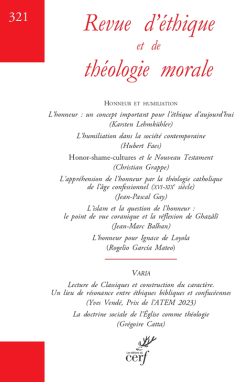
article
الإسلام ومسألة الشرف: وجهة النظر القرآنية وتأملات الغزالي
- جان مارك بلهان
الشرف موضوع للتأمل موجود في الإسلام في مصادره وكذلك في تفكيره "القانوني" والأخلاقي والروحي. يحدث القرآن ثورة أخلاقية ودينية بجعل مكانة الإنسان عند الله الواحد المعيار الوحيد لحياة إنسانية ناجحة حقً...

publication
الإسلام والفحص العلميالإسلام والبحث العلمي. سعي متجدد
- محمد علي أمير معزّي
- دومينيك أفون
كيف يمكن تأسيس دراسة موضوعية ودقيقة ومحايدة للإسلام في مواجهة الانحرافات الناجمة عن تسييسه؟ للإجابة على هذا السؤال الملح، تم إنشاء المعهد الفرنسي للدراسات الإسلامية (IFI) في عام 2022 بناءً على طلب ...
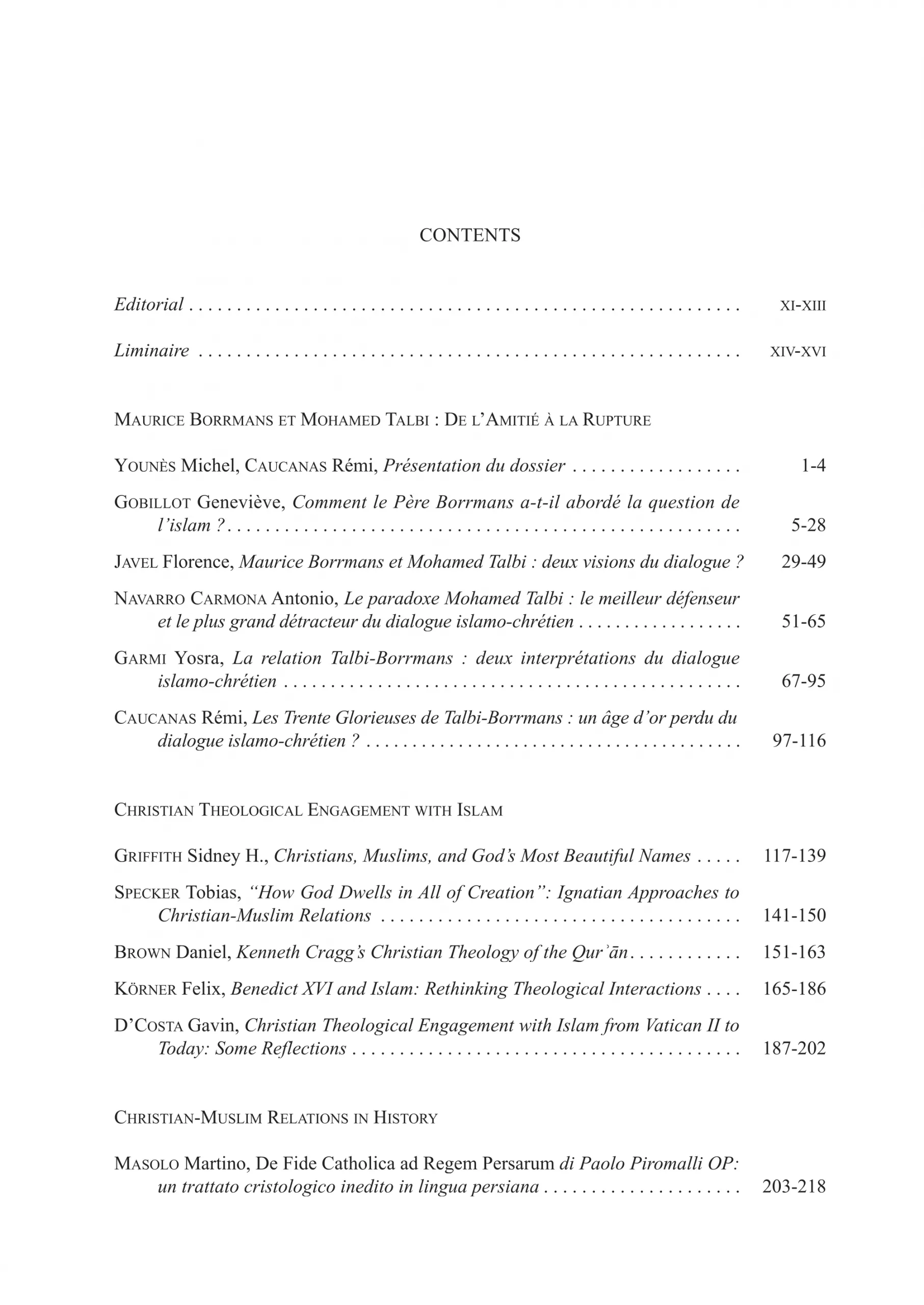
publication
مجلة إسلاموكريستيانا 49 (2024): “موريس بورمانز ومحمد الطالبي: من الصداقة إلى القطيعة”
- ديفيد مارشال
- دييغو ساريو كوكاريلا
- ريمي كوكاناس
- ميشال يونس
- جينيفييف غابيو
- فلورنس جافيل
- يسرا غارمي
- طوبياس سبيكير
عنوان هذا العدد، “موريس بورمانز ومحمد الطالبي: من الصداقة إلى القطيعة”، استوحي من مجموعة مقالات تسلط الضوء على جوانب مختلفة من العلاقة بين هاتين الشخصيتين اللتين تركتا بصمتهما في التاري...

article
إعادة تعريف التأويل القرآني: التفسيرات الإنسانية لمحمد عابد الجابري ونصر حامد أبو زيد
- علي مصطفى
يقدم هذا المقال الجهود الابتكارية لمحمد عابد الجابري ونصر حامد أبو زيد في تفسير القرآن من خلال منظور إنساني. تمثل طريقتهما تحولًا جوهريًا، حيث يعتبران القرآن نصًا ديناميكيًا يتفاعل بنشاط مع المفسر ...
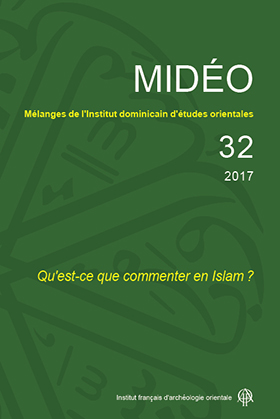
publication
ما هو الشرح في العلوم الإسلاميّة؟
- إيمانويل بيساني
يجمع هذا المجلّد من مجلّة المعهد معظم المداخلات الّتي قُدّمتْ في الندوة التّي نظّمها المعهد الدومنيكيّ خلال أيام ١٤ و١٥ و١٦ يناير ٢٠١٦ في القاهرة، تحت شعار «علوم الإسلام بين التكرار والإبدا...
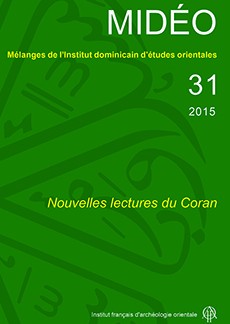
publication
طرق جديدة لفهم القرآن
- إيمانويل بيساني
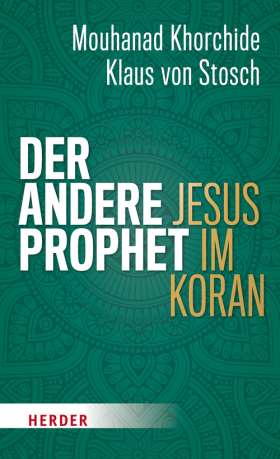
publication
النبيّ الآخر: يسوع في القرآن
- كلاوس فون شتاوتس
- مهنّد خورشيد
النبيّ الآخر: يسوع في القرآن يعتبرُ الإسلامُ يسوعَ واحداً من الأنبياء الأبرز ويشيرُ إليه القرآن كعلامةٍ إلهيّةٍ. إلّا أنّ مكانته في الإسلام لا توازي على الإطلاق مكانته في المسيحيّة. يلجأ مهنّد خورش...





